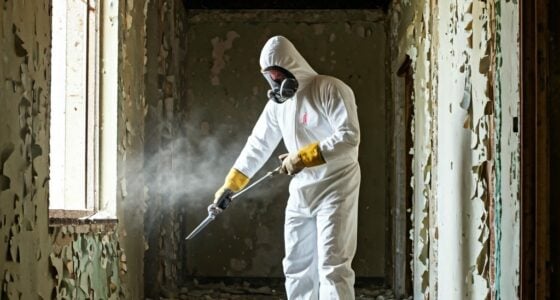A study published in a recent issue of Scientific Reports has concluded that improper asbestos removal processes can actually lead to increased contamination within and outside of treated buildings. If true, this would lead to an increased risk of malignant mesothelioma and other asbestos-related diseases.

Lack of Negative Pressure During Asbestos Removal Could Increase Mesothelioma Risk
The study conducted by Andrzej Obminski of the Building Research Institute in Warsaw, Poland, was not aimed at risk of mesothelioma but still gives rise to concerns among healthcare professionals and advocates for those diagnosed with the rare form of cancer. The research presents the consequences of a lack of negative pressure during asbestos removal, which include asbestos levels outside of the treated building and near the renovated rooms increasing to the point of covering the entire interior of the building.
According to the study, the increased contamination caused by a lack of negative pressure in the work zone can lead to long-term retention of asbestos fibers in the facility despite asbestos removal, an outcome that would significantly increase the risk of asbestosis, asbestos-related lung cancer, and mesothelioma in those who frequent the building. In one example, non-friable asbestos-cement sheets removed in the cited conditions increased the contamination of indoor air outside of the work zone up to 3000 f/m3 and the removal of friable asbestos inside the work zone up to 21,000-51,000 f/m3 and outside the work zone up to 18,000-28,900 f/m3.
Study Points to Improvements Needed to Prevent Increased Risk of Mesothelioma
The researchers point to several preventable errors made during asbestos abatement that contribute to increased risk of mesothelioma and other asbestos-related diseases from elevated levels of asbestos fibers. They include building security switching off the electricity in the empty building at night to save energy, thus shutting down vacuum-filtration units in the work areas, a lack of air filtering units inside the abatement zone, and using water instead of specialized agents to wet down the asbestos-containing materials.
In their conclusions, the researchers noted the increase in the number of mesothelioma cases outside the industrial manufacturing sector and the attention it has drawn to the risks associated with relatively low short-time exposure with sufficient cumulative doses. Writing that non-occupational exposure to asbestos may explain approximately 20% of mesothelioma in industrialized countries, they conclude that asbestos removal should only be undertaken using the most effective environmental protection measures under specialist supervision.
If you or someone you love has been diagnosed with an asbestos-related disease, the Patient Advocates at Mesothelioma.net are here to help. Contact us today at 1-800-692-8608 to learn more.
